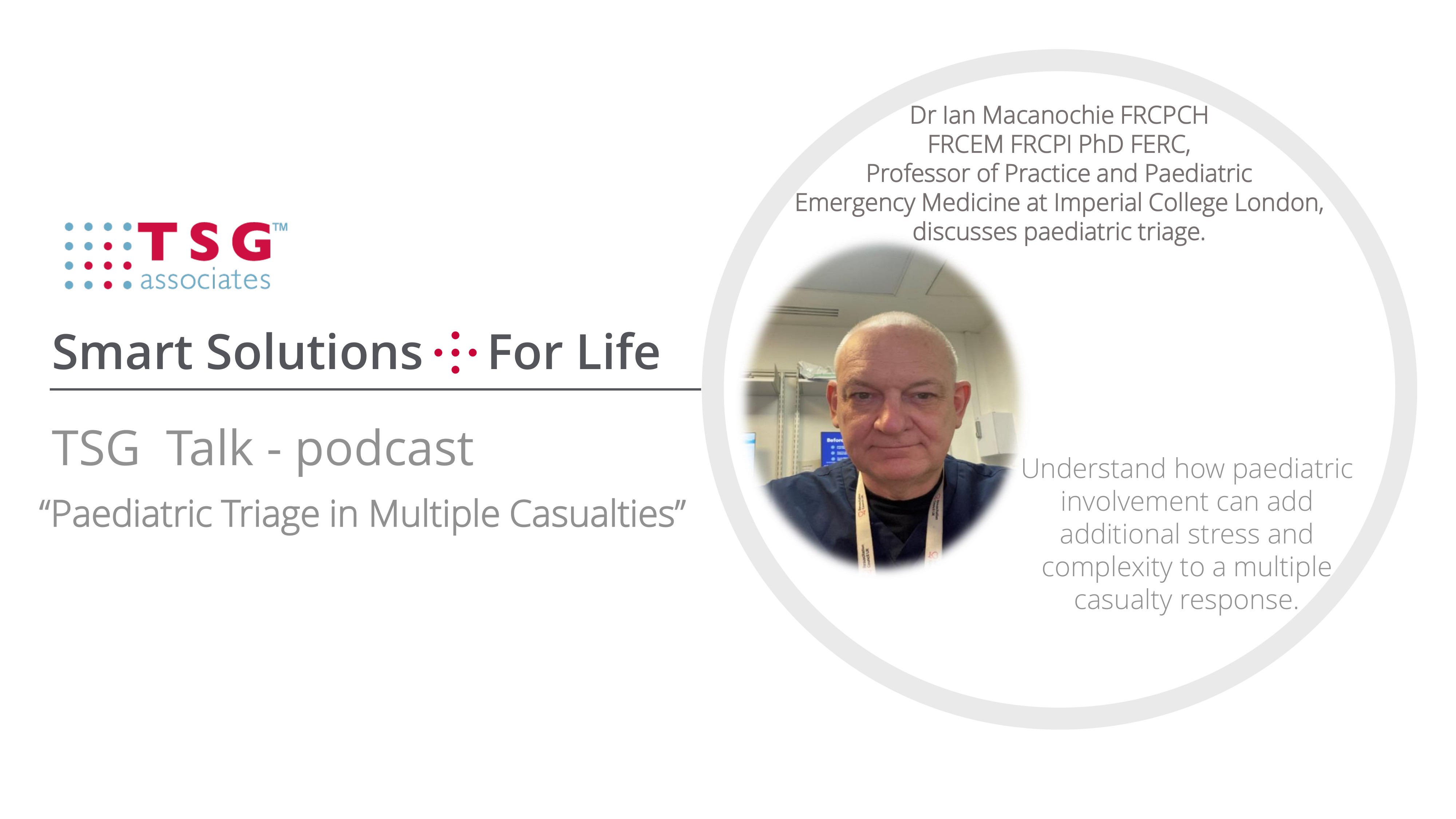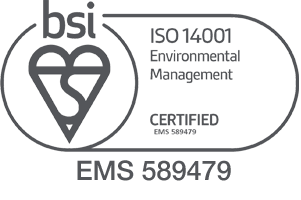


02/01/2022
TSG Talk- Paediatric triage in multiple casualties
Administering effective triage is a vital component of a successful response during multiple casualty events, but it can be an incredibly difficult role to perform, especially with the added stresses of paediatric involvement. In a recent episode of our podcast, TSG Talk, senior partner Colin Smart discussed the subject with Dr Ian Maconochie.
How to approach child casualties
The first matter of discussion in the podcast was how first responders should approach a child casualty even if they have not done so before. Dr Ian Maconochie emphasises the significance of demonstrating a sense of calmness to the person affected by the incident. As a first responder, it is crucial to ensure that you are providing the best possible assistance for the situation by remaining stable so as not to alarm the casualty.
“I have something called my fixed dilated face, which is sort of a Richter smile. And it's not quite as bad as that but it's sort of like a smile and a calm type of approach. Even though behind that sort of facade you may be thinking ‘Oh my goodness what is going on?’ What's really important is to try and engender calm in these sorts of situations knowing that you're going to try and do the best that you can for this situation.”
As Dr Maconochie also explains, if first responders conduct themselves calmly and talk to the casualty as much as possible, even if you are unsure if they can hear you, then this will help provide assurance throughout the triage assessment.
“It doesn't matter if they're preverbal or not, simply talking and making reassuring noises is really important..”
How to care for multiple paediatric casualties
Whether they’re on their own or with an adult, there is a high chance of finding an injured child in an incident with multiple casualties. The Manchester bombing is a notable recent example in the United Kingdom which saw 160 people injured, with 40 of them being children of mixed ages. As Dr Maconochie explains, one of the biggest challenges in caring for multiple paediatric casualties is prioritising who needs the care first within different age groups and injuries.
“In some respects, if you have teenagers of a similar age, then you can have a better idea about the extent of their injuries and how to prioritise them compared to a whole range of different ages. There may be comorbidity in older people, which is significant compared to young children who may otherwise be well.
But again the young can also as we know, hide the extent of their injuries by their physiological signs to a later stage. I think this is where the real difficulty is in terms of triaging on a physiological basis is ”
The psychological perspective of paediatric triage
Managing paediatric casualties in hospital wards is an added challenge faced when providing care, from a physical and psychological perspective. One idea that was implemented following the Manchester bombing was managing children and parents in the same ward to limit separation challenges for families or friends in such a difficult situation. This was a practical solution at the time, however, one that led to difficulties, as Dr Maconochie explains.
“One of the key elements that came up is about managing injured children and their parents together on the same ward, which again could be quite difficult in terms of how we set about our response to services. They thought paediatric casualties were the most difficult at the time when there was the separation of children from their parents or adults accompanying them. So, these are really quite practical but difficult problems for us to think about in the heat of the moment.”
Differences between adult triage and paediatric triage
There are many differences when applying paediatric triage compared to adult triage. While talking with Colin Smart, Dr Maconochie highlighted how a child's physiology changes as they grow older, along with the associated anatomical changes, this deeply affects the way we triage children compared to adults.
“For example. The head, in a two-year-old, is almost like a bowling ball on top of a small body. ”
Tips for successful paediatric triage
As the episode reached its conclusion, Dr Ian Maconochie provided our listeners with insightful advice to take into scenarios where triage of multiple casualties may have taken place, including:
1. Have a calm, measured approach
“A calm, appearing to be measured approach, is really important and that's as I say is talking to anyone of any age. And it doesn't really matter if they understand English or not, if they're preverbal or not. It's simple, as a lot of our communication is non-verbal anyway.”
2. Be adaptable
“And finally, I think is to recognise that any plan that you have, you've got to be flexible and adaptable, and know that you and the system are doing the best that they can for those patients of all ages.”
Find out more
Click here to listen to the full TSG Talk episode featuring Dr Ian Maconochie, to find out more about life-saving solutions, please call TSG Associates on 01422 557841 or email us at info@tsgassociates.










